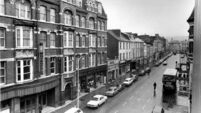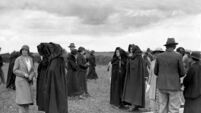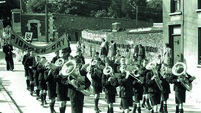The story behind a 'haunted' house off Cork's Lover's Walk
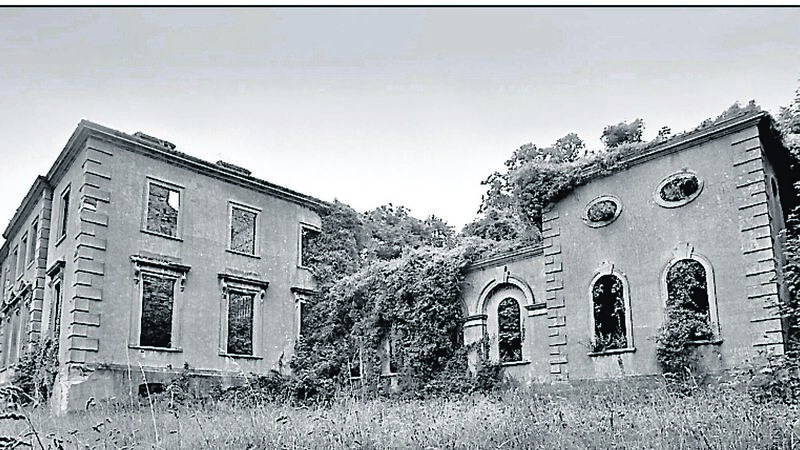
‘The Haunted House’ on Lover’s Walk - a good place to pick blackberries... if you dared! Picture: Tim Cagney.
THIS month, so many children faced into their first days at school, we wonder what readers can remember of their own initiation on to the long road of education. Where did you first go through those gates? Can you recall how you felt? Were you happy, among friends, or terrified? We’d like to know.
A couple of years ago, I wrote a piece for the Holly Bough on the little primary school I attended in the ’50s, Miss Cahill’s on Summerhill, below St Luke’s. It was a wonderful place to be introduced to learning, and I loved every minute of my time there. I finished the article by asking anybody else who had been there to write in with their own memories, but, alas, didn’t get any response.
Recently, though, I met up with Catherine McAdam, from Clonakilty, who said she had enjoyed that article so much, she cut it out and kept it, and the following Christmas bought the Holly Bough specially, to see if there was a follow-up piece with other former pupils’ memories. Well, unfortunately, there wasn’t, because they didn’t write in. But meeting with Catherine made me think that perhaps a plea through this page, with its very wide readership, might get results.
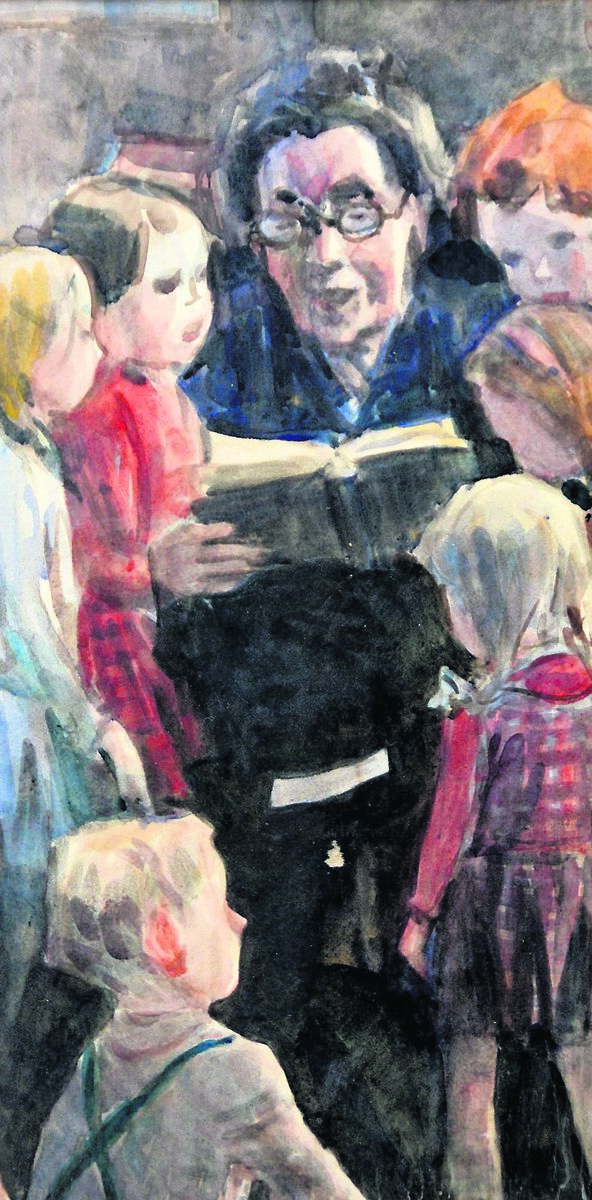
Did you go to Miss Cahill’s school at 4, Empress Villas on Summerhill at any time between the 1940s and 1960s? Or do you know anybody who did? If so, please contact me.
She was an incredible woman with a great reputation for inspiring a love of learning in her pupils, and deserves her place in history. Some names that come to mind are Maura Breathnach (daughter of the Irish professor at UCC), Julia Cotter (later a star of Irish Theatre Ballet), Carol Stoker, Marie Welsh, Paul Harrington, Mary Philomena O’Higgins, Mary Patricia O’Higgins, Margaret Barry… Are you reading this?
Pat Kelly mentioned a week or two ago that Thompson’s pie makers scorned processed cans of apple puree and instead relied on a Victorian apple peeler and corer which somewhat shortened the labour of preparing those delectable pastry treats, dusted with icing sugar.

We have tracked down a genuine example of this machine, and show it here for your instruction! The cooking apple is spiked on to the rod, and the wheel is turned, pushing the rod through and coring the centre, while the outer skin is peeled off in strips. Perhaps the one they used at Thompson’s could do several at a time? Otherwise it would be a long job, preparing dozens of pies for the shop counter.

Also a couple of weeks back, Tim Cagney talked about The Haunted House on Lover’s Walk being the best place to pick blackberries. He has actually done a lot of research into that marvellous old place, known to generations of Cork kids as a great place to explore, and generously shares some of his findings with us here: “One of the problems of picking blackberries within walking reach of my home on Gardiner’s Hill was finding crops which had not been covered in roadside dust, raised by passing cars. Then - one day - I discovered a place where dust presented no problem at all. This was known as The Haunted House, the ruins of a once-imposing dwelling located at Lover’s Walk, off Montenotte.
"The house was separated from the twisty road by a high wall, in which some obliging soul had knocked a hole. Through this, you could gain access to the extensive grounds, which were filled to the brim with brambles. The berries thereon were of a very generous size, partly because not many people knew about them.
"Or perhaps they were afraid of encountering the ghost - some said that the place was haunted by the spirit of Sarah Curran, looking for her deceased lover, the patriot Robert Emmet.
"The house itself didn’t look very spooky - the roof had fallen in and there was plenty of daylight within its walls. Anyway, ghosts were not supposed to appear during daylight hours, so myself (and a small band of buddies) could devote our full attention to blackberry-collecting.
“In former times, the house - called Woodhill - had been the grand residence of one Cooper Penrose, a wealthy timber-merchant. He had a niece called Mary Pike, who was of a banking family of the same name in the city. In April 1797, Mary had inherited what was then a huge fortune - £20,000 - from her father, Samuel Pike, who ran Pikes Bank from 1770. This came to the attention of a man known as Sir Henry Brown Hayes, who lived in Vernon Mount, near Douglas. One evening, Cooper Penrose invited Sir Henry to dinner at Woodhill, where Mary Pike was present. At this stage, Mary had taken up residence with her uncle, in order to avoid the constant stream of suitors besieging her home, in the aftermath of her inheritance.
"Sir Henry decided to marry Mary, thereby gaining access to her wealth. However, instead of going through the usual niceties of courtship, he hatched a plan to kidnap her, and spirit her away to Vernon Mount, where he would force her into marriage. To this end, he obtained a letter from Mary’s doctor, and - copying the handwriting - wrote her a bogus letter, in which he said that her mother was seriously ill, and needed to see her. A carriage was duly sent to Woodhill to collect her, but it was intercepted by agents of Sir Henry, and she was carried off to Vernon Mount instead. There, Sir Henry, assisted by a man dressed as a priest, took her through what purported to be a marriage ceremony, even forcibly placing a wedding ring on her finger.
“Mary, however, didn’t accept this, and wrote to her uncle, desperately seeking his assistance. The outraged Penrose had Mary rescued and returned to the safety of Woodhill.
"He also had the ruffian Sir Henry arrested and brought before the courts, on charges of kidnapping. The case was successfully prosecuted - in 1801 - by one John Philpott Curran, a native of Newmarket, Co. Cork. Sir Henry was sentenced to hang, but this was later commuted to deportation, and he was dispatched to New South Wales aboard a prison ship named The Atlas.
“John Philpott Curran became quite prominent in legal circles in Ireland, rising to become Master of the Rolls and living in a grand house called The Hermitage at Rathfarnham, then a rural area south of Dublin. His daughter Sarah was introduced to the aspiring rebel Robert Emmet by her brother Richard, who was a fellow-student at Trinity College. The pair fell madly in love, but Sarah’s father did not approve of the romance.
“Eventually Sarah fled to Cork and stayed with Mary Pike at Woodhill. It isn’t clear whether this was because of her father’s opposition or because he feared for her safety, given Emmet’s seditious leanings. Alas, we all know how that love affair ended.
“Emmet was executed for treason in 1803, and Sarah eventually married a British army officer, Captain Henry Sturgeon, at the church in Glanmire in 1905. Her life was not happy: her only son died in babyhood, and she herself died of TB aged only 26.
“Sarah lies at rest in the Curran plot at Newmarket.”
In 1973, says Tim Cagney, he moved to Dublin, for career reasons, and later he and his wife tookup residence in Rathfarnham, now part of Dublin suburbia.
“Our house is directly across the road from the grounds of the former Hermitage, where Sarah Curran grew up. The big house itself was acquired in 1910 by Patrick Pearse, as a new home for his famous Irish-speaking school for boys, called St. Enda’s. On the morning of Easter Monday, 1916, Pearse left St. Enda’s for the GPO, never to return.
“The house is now home to The Pearse Museum, and the surrounding parkland is a public amenity, re-named St. Enda’s Park. The road leading to it is called Sarah Curran Avenue. My wife and I walk there nearly every day, retracing the footsteps, perhaps, of Robert Emmet and Sarah Curran. The connection between Sarah’s ghost and Woodhill is now clear (to me), but little did I think, when picking blackberries there all those years ago, that one day I would live within a stone’s throw of history.”
That is a moving account of great historical events, Tim, and we thank you both for your indefatigable research, and your skill at drawing us into the whole story.
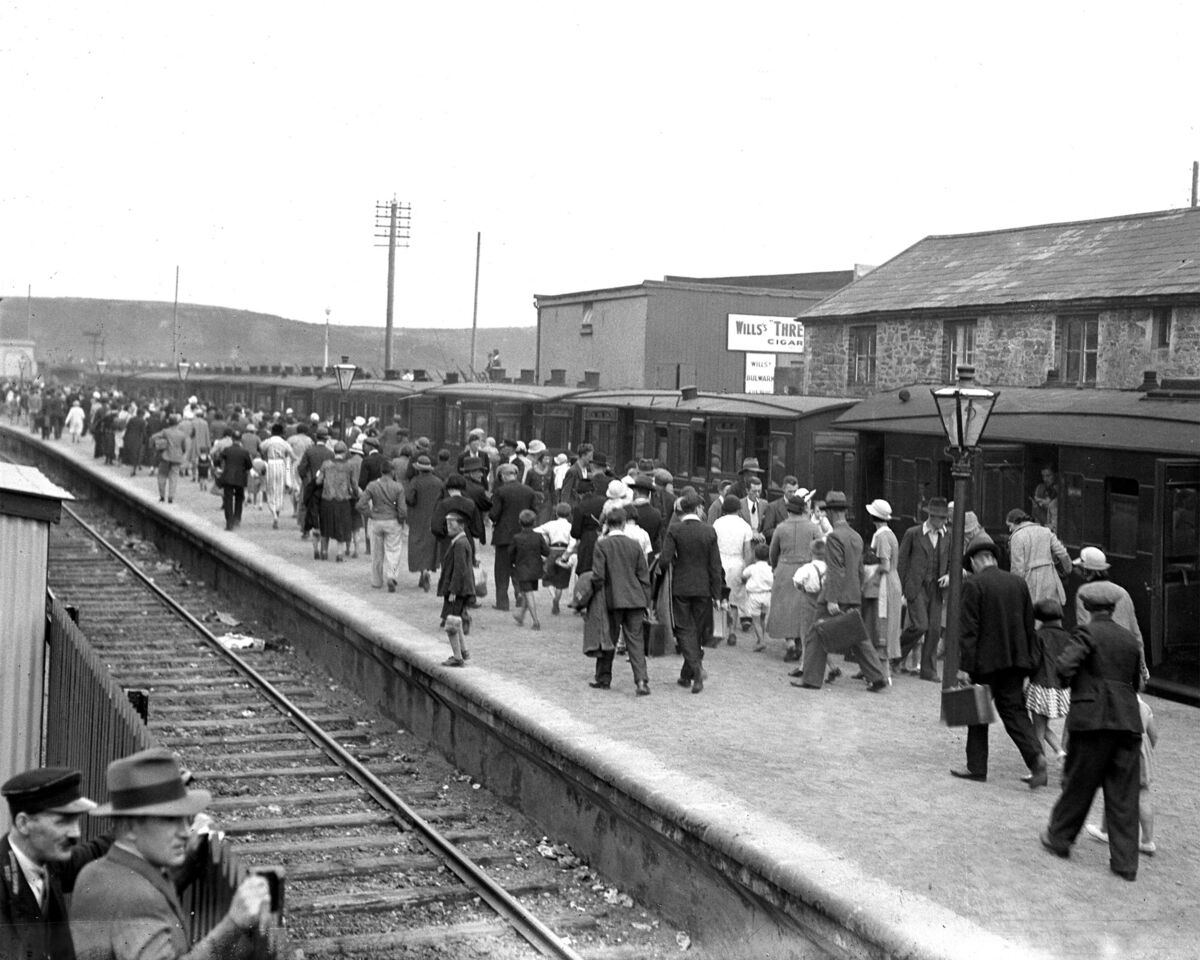
And finally, some more lovely memories of travelling to Youghal on the train, sent in by Noel Johnston.
“I have been reading these articles for a long time, and finally I am putting fingers (slowly) to keyboard. Youghal was a magical place, and I recall with delight the many outings in the late forties & fifties. My parents were strict about paying for things and being frugal as well, so both of them, myself, and our dog Scrappie, walked from Ballinlough to the Glanmire station via Wallaces Avenue, Victoria Road and the bridges.
“To answer the question about charges for children, I know that there were cheaper fares for the afternoon trains on the Sea Breeze excursions.
"We always got tickets for two adults , one child, and a dog. To the best of my memory the charge for the dog was threepence, and it was sixpence for myself. The dog of course went with us in the carriage - no expulsion to a cage in the Guards van!
“My grandmother always advised us to sit with our backs to the engine to avoid sickness, but the real reason was to avoid smuts from the engine. I always got them in my eyes after determinedly lowering the window by the strong leather strap and hanging dangerously out, with my father hanging on to the back of my jumper!”
Noel thinks the first glimpse of the sea after the last station, Killeagh, was the biggest thrill of the day. “Everything else was as told already by so many other correspondents, but I have one addition: we brought our own little meths stove to boil our own kettle!!!”
Keep up the good work on this page, he urges.
“And incidentally, I also remember your good self in a school uniform in your father’s wonderful book shop.”
Well, that is an unexpected surprise, Noel, and very touching.
How many others can recall queueing for their schoolbooks in September each year, clutching a scribbled list? That, of course, was before the powers that be hit on the delightful idea of slightly altering standard texts like Shakespeare every year, so that each batch of September students would have to pay full whack for a new book rather than saving precious money by buying secondhand. It really was a retrograde move. Isn’t Shakespeare the same, whatever the cover?
Send us your memories. We want to hear them. Email jokerrigan1@gmail.com or leave a comment on our Facebook page: https://www.facebook.com/echolivecork.

